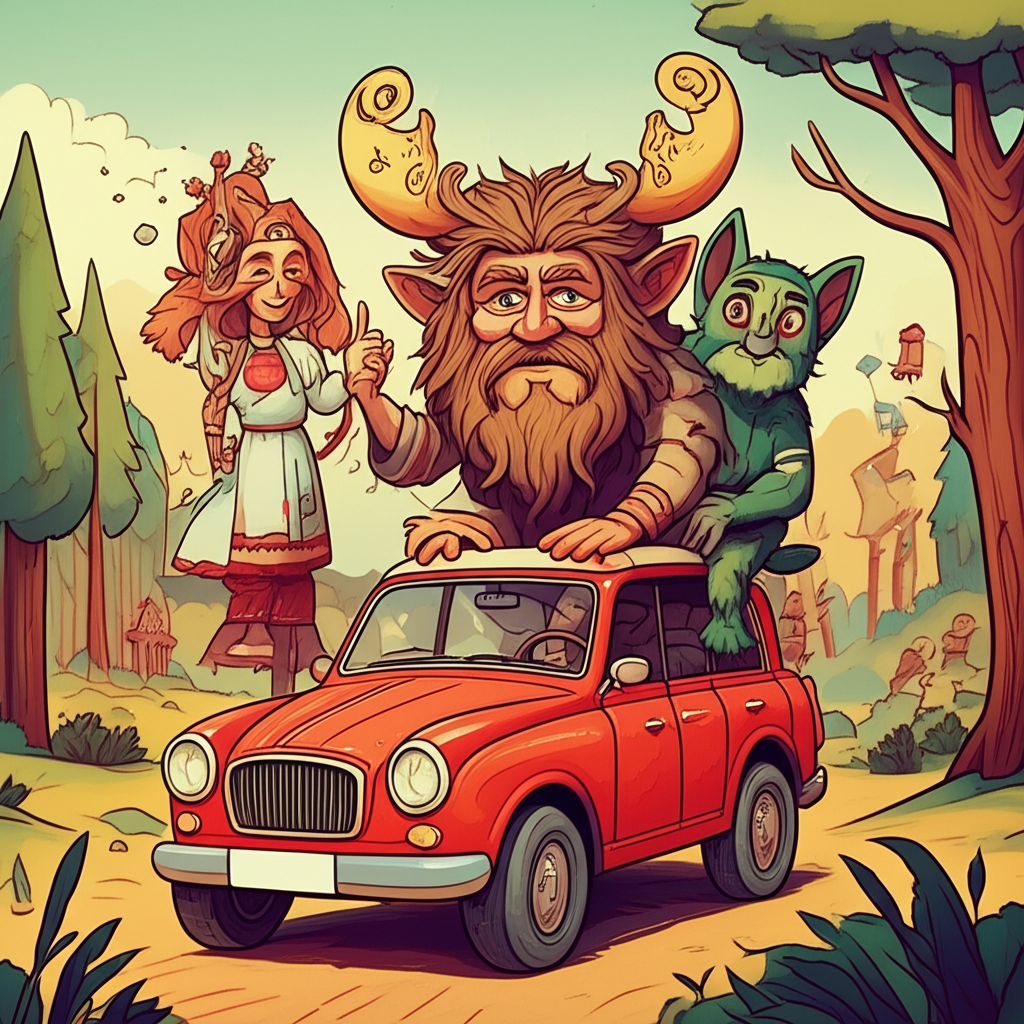
In the deep, verdant heartlands of Eastern Europe, where the mighty Dnieper River carved its serpentine path through sprawling forests and fertile plains, lived the ancient people of Kyivan Rus’. For centuries, their lives were intricately woven with the rhythms of the natural world, a world they perceived as alive with unseen forces and powerful spirits. Among the rich tapestry of their beliefs, stories of deities like Mokosh, the Great Mother, and enigmatic forest guardians known as Leshy, echoed through the ages, shaping their understanding of the land and their place within it. These are not tales of divine truth to be worshipped, but rather fascinating narratives passed down through generations, offering a glimpse into the imaginative spirit and worldview of a bygone era.
The era of Kyivan Rus’, roughly spanning the 9th to the 13th centuries, was a time when settled agriculture coexisted with a profound respect, and sometimes fear, for the untamed wilderness. Life was often dictated by the seasons, the bounty of the earth, and the ever-present mysteries of the forests that covered vast expanses of their territory. For the people of this time, the world was not a sterile, inanimate space, but a vibrant, animate realm where spirits inhabited trees, rivers, and every rustling leaf. This animistic perspective infused their daily lives, leading to the development of rich folklore and mythology, a way to explain the inexplicable and to navigate their relationship with the powerful forces of nature. They sought to understand the cycles of life and death, the unpredictable nature of the weather, and the hidden dangers and blessings of the dense woods.
Central to these narratives was the figure of Mokosh, a prominent deity in the East Slavic pantheon. She was revered as the Great Mother, the goddess of fertility, weaving, destiny, and the earth itself. Her domain encompassed the nurturing aspects of life, the spinning of fate’s threads, and the very soil from which sustenance grew. While Mokosh represented the foundational elements of life, the forests held their own guardians, and none were as pervasive or as mysterious as the Leshy.
The Leshy, or Lesovik, was not a single, monolithic entity but rather a collective term for a myriad of forest spirits. These beings were depicted as shape-shifters, capable of appearing in various forms to those who ventured into their domain. Some tales described them as tall, imposing figures with skin like tree bark, moss growing on their bodies, and eyes that glowed like embers. Others spoke of them as smaller, mischievous sprites or even as shapeless mists that drifted through the undergrowth. The symbolic attributes of the Leshy were deeply tied to the forest itself. Their ability to change form mirrored the ever-shifting landscapes and hidden pathways of the woods. Their connection to nature, their wildness, and their sometimes capricious behavior reflected the dual nature of the forest – a source of sustenance and shelter, but also a place of peril and disorientation. They were seen as the protectors of the forest, the embodiment of its ancient power and untamed spirit.
The narratives surrounding the Leshy were often cautionary tales, designed to impress upon listeners the importance of respecting the natural world. Imagine a young hunter, eager to prove his prowess, venturing deeper into the ancient woods than he ever had before. The sunlight, filtered through a thick canopy of oak and pine, dappled the forest floor, creating an ethereal, almost dreamlike atmosphere. He was seeking the elusive deer, its tracks a promise of a plentiful meal. As he moved further from the familiar paths, the sounds of his own footsteps seemed to be swallowed by the immensity of the forest. Suddenly, he heard a laugh, a sound that seemed to emanate from everywhere and nowhere at once. Looking up, he saw a figure emerge from behind a colossal, ancient oak. It was a Leshy, its form shifting before his eyes – now resembling a gnarled tree trunk, now a towering man with a beard of moss. The hunter, struck with awe and a creeping dread, remembered the old stories. He knew that to anger the Leshy was to invite misfortune. He quickly bowed his head, offering a silent prayer for safe passage and a promise to take only what he truly needed and to leave the forest undisturbed. The Leshy, its eyes twinkling with an ancient amusement, seemed to melt back into the trees, leaving the hunter with a profound sense of the forest’s watchful presence and a newfound respect for its hidden inhabitants. Other tales spoke of travelers getting lost for days, led astray by the Leshy who delighted in confusing and disorienting those who disrespected their domain, only to reappear at the edge of the forest with no memory of how they got there, humbled and forever changed.
These stories, rich in imagery and symbolism, served multiple purposes for the people of Kyivan Rus’. The Leshy, in their varied forms and behaviors, likely represented the raw, untamed power of nature, the unpredictable forces that could both sustain and threaten life. They symbolized the deep connection between humanity and the natural world, a reminder that humans were not masters of the environment, but rather participants within it. The Leshy could also embody the concept of boundaries – the unseen lines between the civilized world and the wild, and the consequences of crossing them without reverence. Their ability to confuse and misdirect might have represented the challenges and uncertainties of life itself, the need for wisdom and caution when navigating unfamiliar territory, both literal and metaphorical. In a broader sense, the Leshy were a manifestation of the ancient Slavic worldview, where the spiritual and the physical realms were seamlessly intertwined.
In the modern era, these ancient echoes of Mokosh and the Leshy continue to resonate, albeit in different forms. These mythological figures have found new life in literature, fantasy novels, and video games, where they are reimagined as compelling characters and potent symbols of nature’s power and mystery. Cultural studies scholars delve into these narratives to understand the historical beliefs and societal structures of Eastern European peoples. The enduring appeal of these stories lies in their ability to tap into universal themes of humanity’s relationship with the natural world, our fears of the unknown, and our capacity for wonder.
It is important to reiterate that these are captivating cultural stories, passed down through the ages, offering a window into the rich imagination and worldview of ancient peoples. As Muslims, we recognize that only Allah (God) is the true Creator and Sustainer of all existence, the ultimate source of power and wisdom. These narratives, while holding cultural and historical significance, do not diminish that fundamental truth. Instead, they stand as testaments to the enduring power of human storytelling, the universal human desire to understand the world around us, and the vibrant heritage of imagination that connects us to our past. The whispers in the ancient woods of Kyivan Rus’ continue to be heard, not as a call to belief, but as a fascinating echo of a world shaped by wonder and respect for the wild.





